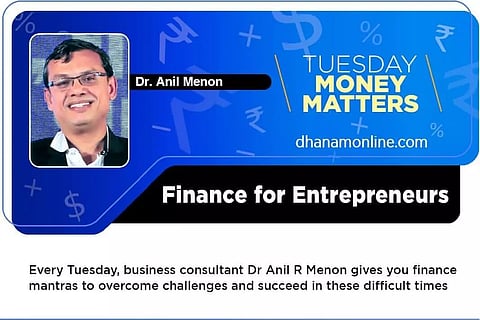

Let us start on a good note in these challenging times. It is certain that the human race has been gifted by the Almighty to face and overcome all challenges. As we all are well aware the global economy is passing through a very turbulent stage due to this pandemic crisis. Various economies have slipped or are expected to slip into recession. Unfortunately, it’s a systemic crisis as all sectors have been badly hit. Numerous companies have already announced bankruptcy. Many experts believe that there could be more bad news and it’s the Micro, Small & Medium Enterprises which will be the worst affected. This article focusses on what firms can do to survive these tough times. It’s what I would like to call the 7 “C”s Model which many of my mentees have successfully applied with good results.
The first “C’ is, of course, CASH: In these challenging times conserve cash & try to keep a buffer cash balance of at least 3 months. This can be achieved by following some steps. This is where the second “C” that is COST comes in. Cut down as much costs as much as possible. Adopt zero-based budgeting techniques and revisit all your assumptions regards costs. Eliminate fixed costs as much as possible. For example – let us consider one such cost i.e. rent expenses. Let’s say you have rented a shop for a fixed cost of 1 lakh per month, assuming you will generate some monthly sales. However, it’s clear now that the expected monthly sales will not be generated. So there 3 alternatives.
Alternative 1: In case one believes that this particular shop is not expected to generate good revenue in the near future. Then one could consider surrendering unwanted premises and eliminate this unnecessary expenses.
Alternative 2: In case elimination is not possible one may try to negotiate and reduce it as much as possible. If both reduction and elimination is not possible, then its best to opt for conversion.
Alternative 3: This essentially means Conversion of fixed costs into variable costs. For example rent has been traditionally considered as a fixed expense. However one can convert it into semi variable expenses. One can renegotiate and request that the fixed rent be reduced to 50,000 rupees per month and there could be a variable component of (say 0.10%) of sales generated from that premises. In this way one can reduce their fixed expenses and of course when good sales are generated it will be a win-win for all stakeholders.
A dear mentee Mr. Joseph Paul (Vismaya brand) has adopted the above steps with good results. Suggest all business to try this ELIMINATE, REDUCE, CONVERT (ERC) approach for not only rent but all possible costs & expenses.
The 3rd “C” is Communication to all stakeholders. Each and every person knows that business is passing through challenging times and are thus open to negotiations. Of course, a good negotiation should be done on the basis of empathy and should be a win-win for all stakeholders.
Next week we shall discuss the remaining “C”s. Till then please apply and let me know your feedback at anilrmenon1@gmail.com
Read DhanamOnline in English
Subscribe to Dhanam Magazine
